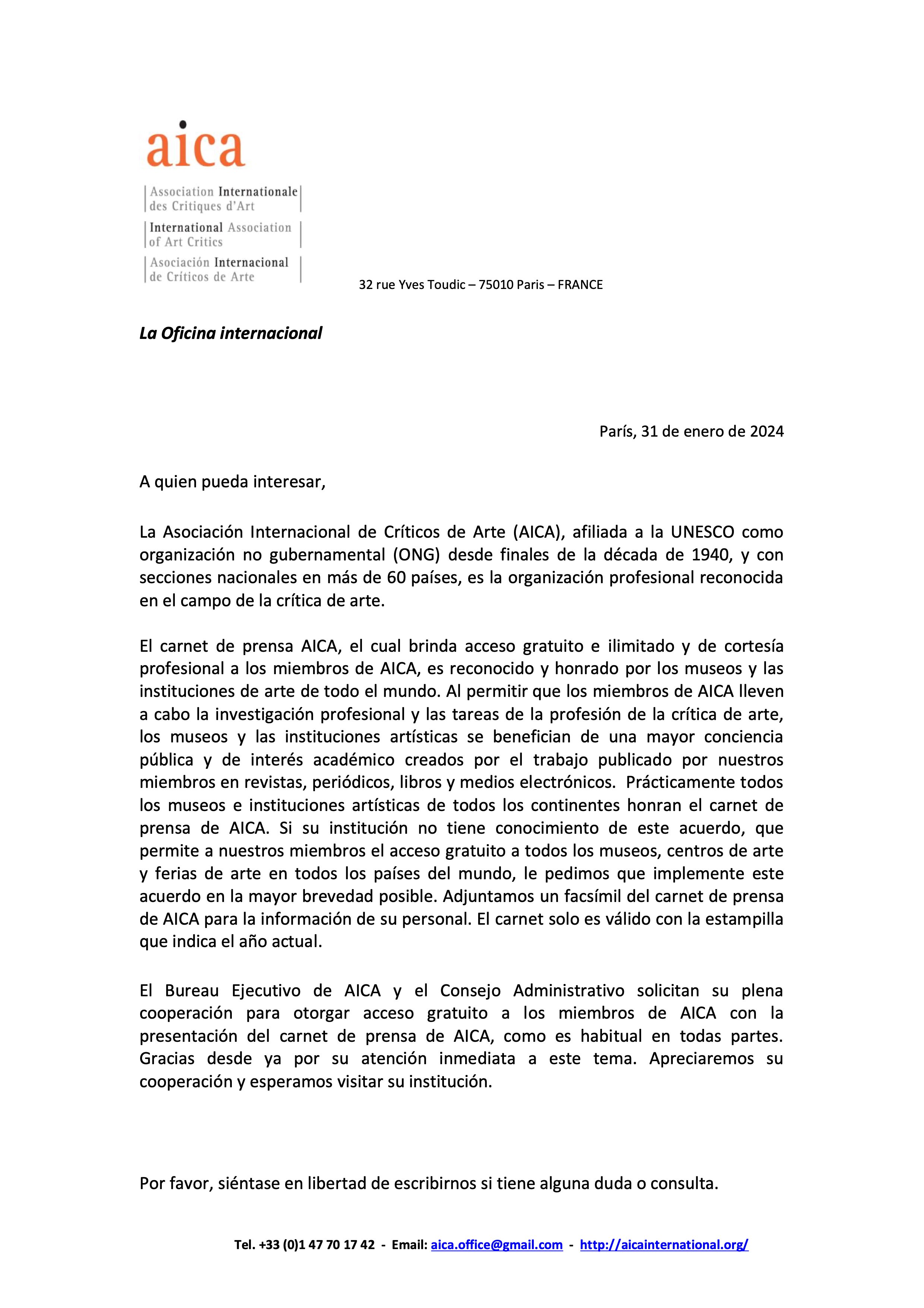About the international association of art critics aica
Toward the end of the forties, when many schools and diverse movements in art were flourishing, art critics, art historians and art educators, as well as curators from museums of modern art gathered at two congresses at UNESCO Headquarters (1948 and 1949). Their aim was to compare their point of views concerning the vocation of art criticism, to analyse their responsibility in regard to artists and public, and to outline the particular nature of their contributions in relation to developments in the fields of art history. Convening from around the world, they included among them the most prestigious names of the times: André Chastel, Jorge Crespo de la Serna, Pierre Courthion, Charles Estienne, Chou Ling, Miroslav Micko, Sergio Milliet, Marc Sandoz, Gino Severini, James Johnson Sweeney, Albert Tucker, Lionello Venturi, Eduardo Vernazza, Marcel Zohar, Paul Fierens, Herbert Read and others.
Following those two international congresses at UNESCO, the International Association of Art Critics (AICA) was founded in 1950 and was admitted in 1951 to the rank of NGO. AICA comprises various experts anxious to develop international co-operation in the fields of artistic creation, dissemination and cultural development.
AICA brings together some 5,000 art professionals from some 95 countries all over the world, organised into 63 National Sections and an Open Section. AICA is particularly well represented in all parts of Europe, Australia, North and South America and the Caribbean. It has very active National Sections in Middle Eastern and Asian countries (Israel, Singapore, Japan, Hong-Kong, Pakistan, South Korea) and a number of African Sections have been formed in recent years. In the past fifteen to twenty five years, Annual Congresses have been held in places as far apart as the Caribbean, Hong-Kong, Ljubljana, Macao and Tokyo, as well as in Europe, and the most recent international conferences to be organised by AICA have held in Dakar (July 2003) and Istanbul (September 2003), Addis Ababa (January 2006) and, recently, Cape Town (November 2007) and Skopje (May 2009).
The objectives of AICA
The main objectives of AICA have changed little over the years. However, they were redefined in November 2003, to emphasise further the global reach of the Association, its cross-cultural ambitions and its interdisciplinary approach. As currently stated, AICA’s main objectives are:
- to promote art criticism as a discipline and contribute to its methodology
- to protect the ethical and professional interests of its Members and co-operate in defending their rights
- to maintain an active international network for its Members, with the aid of available technologies and encouragement of face-to-face encounters
- to contribute to mutual understanding of visual arts and aesthetics in all cultures
- to stimulate professional relationship across political, geographical, ethnic, economic and religious boundaries
- to defend impartially freedom of expression and thought and oppose arbitrary censorship.
Qualifications for Membership of AICA
Candidates are elected by their peers. To be eligible, they must produce evidence of sustained activity over the previous three years, in one or more of the following areas:
- Daily/periodical press, or broadcasting on radio, Tv or video, or in the electronic media
- Publication of works of art history, aesthetics or criticism
- Teaching of art criticism, art history, aesthetics, curating, or art, at higher or tertiary level
- Curatorial work and analysis for educational or scholarly ends, including the production of scholarly or critical for museums or galleries, whose principal aim is not essentially commercial.
General
Placed at the crossroads of cultures, AICA, whose principal objective is to serve contemporary creativity, is now in a better position than ever to see its role and its activities increase throughout the world, thanks to the breadth of its representation and the contacts it maintains.




